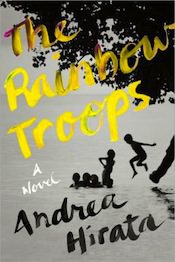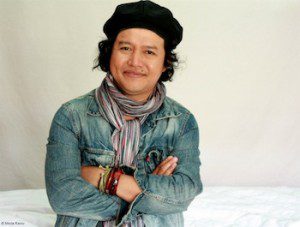
As books gradually established their dominance as a form of entertainment and instruction, they spiraled off into hundreds of fractal genres and sub-genres: from histories and treatises to epic poems and metafiction. To the consternation of punctilious readers everywhere, genres have always intermingled and mixed themselves up. One of those mixed-up genres, the “autobiographical novel,” once served as a catch-all term for some excellent books, including The Notebooks of Malte Laurids Brigge by Rainer Maria Rilke and So Long, See You Tomorrow by William Maxwell.
But autobiographical novels like Andrea Hirata’s The Rainbow Troops seem less common today. Some novels contain an autobiographical element, but few marketing departments type it up in their promotional materials. Usually, unless they need to manipulate the truth extensively, authors opt to write a memoir, a genre that sells better and that remains a bit further out along on the fact continuum.
Indeed, when he spoke at the Iowa City Public Library as part of the International Writing Program in 2010, Hirata said, “The novel is a memoir that was written by trying to balance and associate personal issues with bigger ones concerning government policies on education, natural resource management, and human rights.”
Hirata has no need of the sales an official “memoir” tag would bring his book. According to a 2010 interview with The Jakarta Globe, his novel, Laskar Pelangi, has sold three times more pirated copies—15 million—than official copies—5 million—although it’s hard to know exact sales figures. The Wall Street Journal reported that the book “sold more than a million copies in Indonesia within seven years after its publication in late 2005, or roughly about 140,000 copies annually.”
Either way, Laskar Pelangi, translated as The Rainbow Troops, remains the country’s “bestselling book of all time.” Now, Farrar, Straus and Giroux has published a translation by Angie Kilbane in an effort to bring its author’s story—and presumably some of his success—to English-speaking markets.

The novel tells the story of how a boy named Ikal, his friends, and his teachers face hardship in a poor village school on the island of Belitong. The boys emulate two young genius classmates, a mathematical virtuoso Lintang, and an artistic prodigy Mahar, who inspire their peers to learn and grow despite socioeconomic disadvantages. As Ikal describes it, “Lintang and Mahar created an intellectual and artistic set of goalposts in our classroom.” The boys are also inspired by their teachers, Bu Mus and Pak Harfun, “guardians who helped us prevail in whatever difficulties came our way.”
The book’s title references a nickname Bu Mus eventually gives to the talented group of students, because the boys often climb a filicium tree after storms to search the sky for rainbows. This act—searching for light and color on an overcast day—serves as a simple but effective metaphor for the narrator and his childhood friends as they aspire to more than their circumstances have promised them.“We survived the economic difficulties that strangled us on a daily basis,” Ikal writes. “But above all, we survived the most immediate of threats: the threat of ourselves, our disbelief in the power of education.”
Although Belitong became one of the richest islands in Indonesia after the Dutch discovered tin, many of the Belitong-Malays and other minorities continued to live in poverty. This irony drives the narrative for much of the book. Despite their willingness to dream, Ikal and his friends must attend a dilapidated school in the richest area of Sumatra. Even after the end of Dutch colonial rule, a company called Perusahaan Negeri Timah—literally “The State-Owned Tin Company”—move in to exploit the island’s resources. They have their own staff and private school on a walled estate plastered with signs reading “no entry for those without the right.”
As a narrator, Ikal often looks back from adulthood onto his childhood, editorializing and leaving the poor village school refracted in a prism of sentimentality. The book’s jacket advertises it as “classic storytelling in the spirit of Khalid Hosseini’s The Kite Runner,” but The Rainbow Troops lacks a tight-knit narrative structure, and exists as a collection of legends, anecdotes, aphorisms, historical accounts, and inspirational speeches designed to give the reader a lesson on the importance of education and the evils of capitalism: “But in the end, our school finally lost. We were brought to our knees by education’s strongest, cruelest, most merciless and hardest-to-fight invisible enemy. It gnawed away at the students, teachers, and even the education system itself. That enemy was materialism.”
The short, crisp sentences comprise the novel’s greatest strength. Hirata’s romantic style, combined with attendant detail, form a controlled, cohesive vision. His passion for education and his criticism of the corporate state are tempered by humor and context, and structured around a framework of specifics: Ikal’s school, friends, and teachers. Whatever you call it—novel, memoir—The Rainbow Troops provides plenty of heartfelt prose for readers inclined to cultural tourism, and for those who find themselves missing the tiny, ramshackle village school, Hirata has written three sequels to Laskar Pelangi, books that might someday find their way to English-speaking readers.




